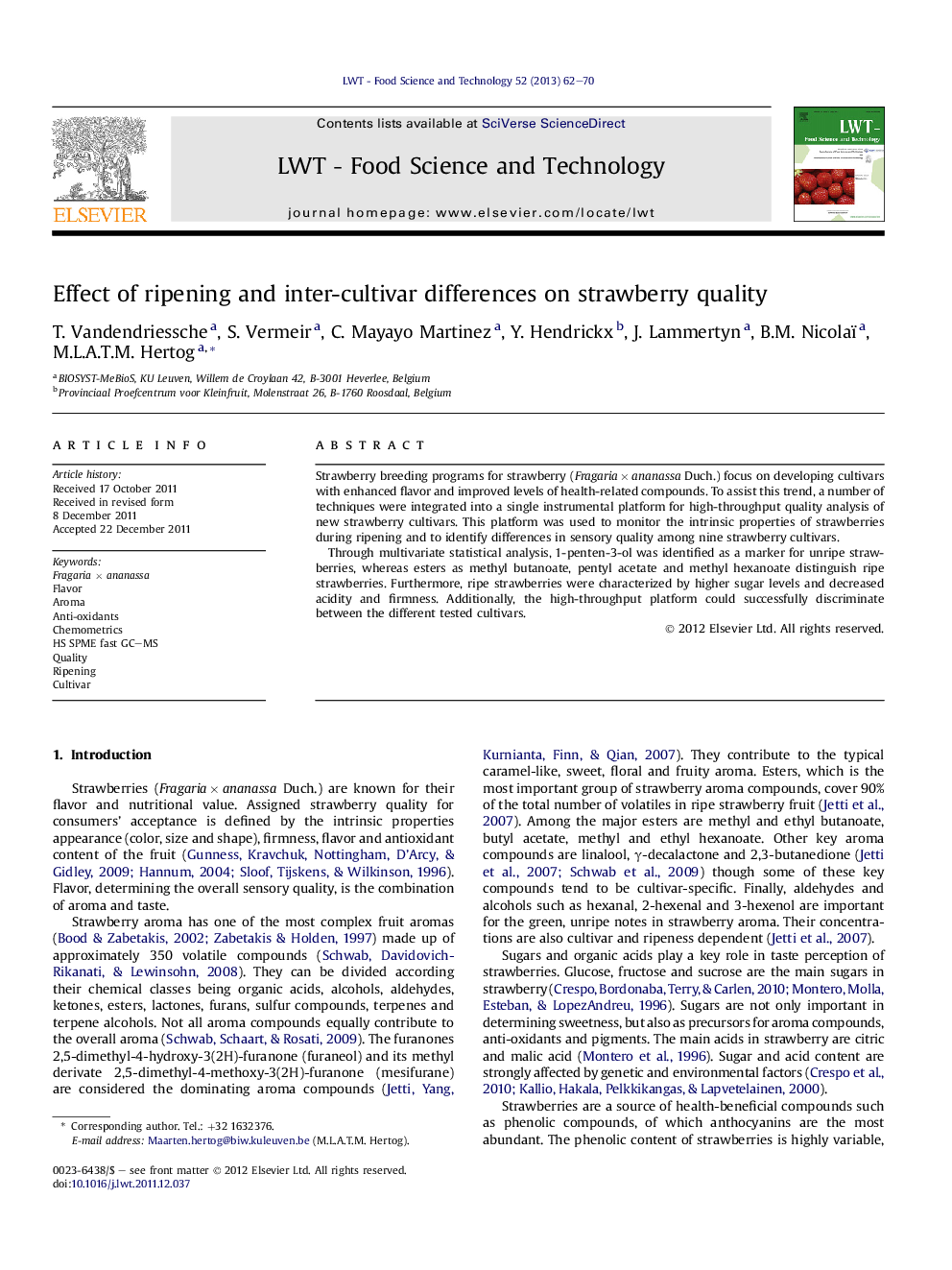| Article ID | Journal | Published Year | Pages | File Type |
|---|---|---|---|---|
| 4563906 | LWT - Food Science and Technology | 2013 | 9 Pages |
Strawberry breeding programs for strawberry (Fragaria × ananassa Duch.) focus on developing cultivars with enhanced flavor and improved levels of health-related compounds. To assist this trend, a number of techniques were integrated into a single instrumental platform for high-throughput quality analysis of new strawberry cultivars. This platform was used to monitor the intrinsic properties of strawberries during ripening and to identify differences in sensory quality among nine strawberry cultivars.Through multivariate statistical analysis, 1-penten-3-ol was identified as a marker for unripe strawberries, whereas esters as methyl butanoate, pentyl acetate and methyl hexanoate distinguish ripe strawberries. Furthermore, ripe strawberries were characterized by higher sugar levels and decreased acidity and firmness. Additionally, the high-throughput platform could successfully discriminate between the different tested cultivars.
► Several high-throughput techniques were combined to evaluate strawberry quality. ► Chemometrics was applied to analyze ripening and cultivar related differences. ► 1-Pentenol was found as marker for unripe strawberries. ► Esters, high sugar levels and low acidity and firmness characterized ripe fruit. ► Markers for each cultivar were identified.
